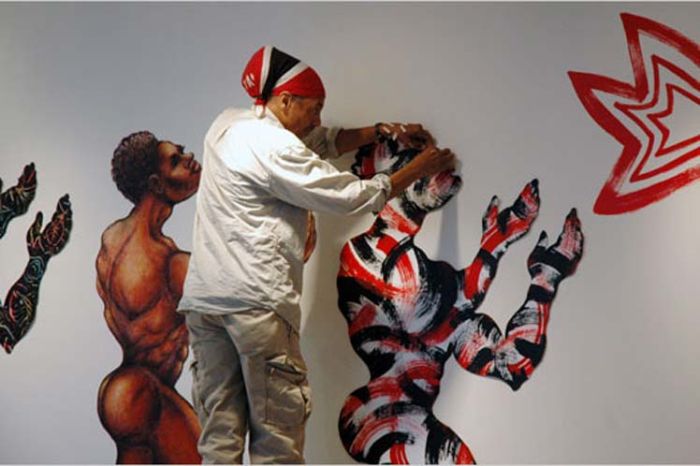
Ben Jones lives in New Jersey and participated years ago in three collective shows in Havana and shared presentations with local musicians
US plastic artist Ben Jones expressed his dissatisfaction with the stance of US President Donald Trump, opposed to enhance relations between his country and Cuba, where he’s presenting a personal exhibition.
Most US citizens don’t like him, said the artist who recently arrived in Havana with some of his works that on exhibit at the National Museum of Fine Arts in Havana, from July 21 to October 23, in the Transitional Hall of the Fourth level of the Universal Art Building.
Jones thinks that many of Trump’s voters are very racist and barely care about the environment, interested only about money, and do not want to accept that the world has changed.
Several doors between the United States and Cuba have been opened since the administration of Barack Obama, most of the people of my country want to come to visit Cuba and those who have already visited this island once, have a desire to return, he said in an exclusive interview with Prensa Latina.
I always advise everyone to go to Cuba to create their own opinion about the country, said Jones, who after so many visits -from 1977 to the date- feels already like a native of the Caribbean archipelago.
The artist has many friends in the island, including eminent figures of Cuban ballet. When he was young was also a folkloric dancer and within his plastic creation he has reflected more than once his passion for Yoruba culture.
The African root becomes a common element among the peoples of the United States and Cuba, but racial discrimination in his homeland sometimes reaches violence at the highest level and the murder of innocent civilians.
In recent years, a series of incidents involving police officers has mourned more than one African-American family, Jones denounces and questions it from his art, faithful to his generation, an essential protagonist of the struggle for civil rights in the United States in the 1960s and 1970s.
Jones grew up in the time of the Vietnam War, the Black Power and the Black Panthers, whose ideas motivated the emergence of the Black Arts Movement, from which he emerged as one of the main exponents.
In 1968, he was appointed advisor to the Black Freedom Society while enriching his style with elements of Expressionism, Action painting and Pop Art, influenced by Andy Warhol and Robert Rauschenberg, exponents of this art movement.
Icons of US culture as singers Ella Fitzgerald, Billie Holliday, Sarah Vaughan and African-American activists Malcolm X and Fannie Lou, appear in Jones’ works as obeisance to personalities who imposed their talent on the unjust social order of the time when they had to live.
As he recalled, Fitzgerald, Holliday and Vaughan, three of the most beautiful voices that his country has given to the world, despite being the stars of the shows, were forced to enter the hotels through the back door, among other discriminatory measures. In addition to racial segregation, different forms of violence such as wars take human lives, without distinction of race, and disrupt the souls of those who fight them.
According to Jones, many police officers have problems in Latino and African-American neighborhoods because they were soldiers who fought in Afghanistan or Iraq and now roam the streets of the United States very tense as if they had not yet left those countries.
In addition to the traumas for racial, gender and warmonger violence, Jones’ exposition in Cuba, under the title of Resistance, aims with a critical eye also at several environmental problems, such as the oil spill in the oceans, with terrible consequences for all living beings.
The artist recalled the oil disaster caused by British Petroleum Company in the Gulf of Mexico in 2010, which destroyed the life of plants, fishes, birds and endangered coastal villages.
Where will the children live? What planet are we going to pass to the new generations? He asked in horror and immediately affirmed: We should and can give them a cleaner planet.
Jones’ family attended the inauguration of his first personal exhibition in Cuba, however, it should not be forgotten that this artist, who lives in New Jersey, participated years ago here in three collective shows and shared presentations with local musicians.
In 2014, Jones coordinated for the National Museum of Fine Arts the exhibition entitled Afro-American Artists and Abstraction, which was accompanied by about 80 Americans who visited art schools and art galleries in Havana.
Years ago I said: I’m going to visit Cuba, and now I just say: I’m going to visit my country, and everyone understands that I’m going to Cuba because my heart is in Cuba, he said.
 Escambray ENGLISH EDITION
Escambray ENGLISH EDITION





Hi. It would be much better if you write in English.